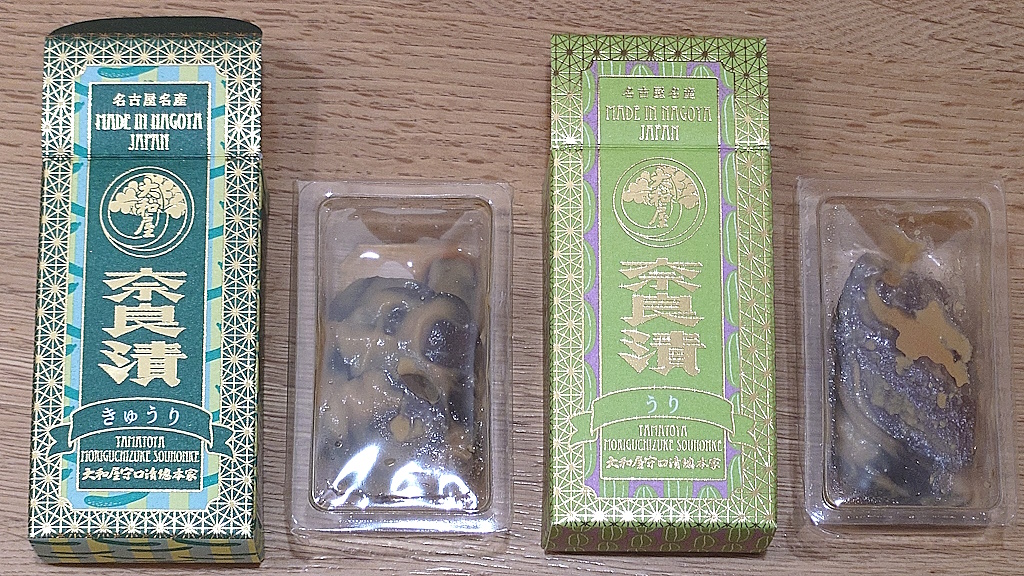One of Nagoya’s classic souvenirs is “Morikuchi-zuke” from Yamatoya Moriguchi-zuke Souhonke, but the other day, I received a colorful small box of “Irodori.”
I received ‘kyuri’ (cucumber) and “uri” (melon) Nara-zuke. Both Moriguchi-zuke and Nara-zuke are pickles made by marinating vegetables in sake kasu (sake lees). However, Moriguchi-zuke is made using “Moriguchi daikon,” a long, slender radish native to Aichi Prefecture, marinated in sake kasu and mirin kasu (sweet rice wine lees). Nara-zuke, on the other hand, is made by marinating various vegetables such as cucumber, melon, and watermelon in sake kasu.
Moriguchi daikon is a traditional vegetable of Aichi Prefecture, with Fuso Town in Aichi Prefecture accounting for about 70% of national production. It is a variety of radish with a diameter of 3–4 cm, a length of 120–130 cm, and some reaching up to 180 cm, and is registered in the Guinness World Records as the longest radish in the world.
I had always found the unique alcoholic flavor of Moriguchi-zuke and Nara-zuke off-putting, but I was drawn in by the vibrant packaging and decided to give them a try. To my surprise, they were surprisingly easy to eat and delicious. I wondered if my taste buds had matured (laughs), but apparently honey is added. They are cut into bite-sized pieces for easy eating and packaged in airtight containers to maintain freshness, which I also appreciated.
I was impressed by how traditional Japanese pickles have successfully adapted to the times and changing needs. I highly recommend giving them a try. The “Irodori” series also includes Moriguchi daikon, ginger, and bamboo shoots.
The distinctive design on the packaging, featuring the long, slender Moriguchi radish, is a registered trademark.
For inquiries regarding trademark registration, please contact Hattori & Partners here. (Syszo)
